How Zaha Hadid Architects’ Napoli Afragola station is shaping the future of Italy’s train infrastructure
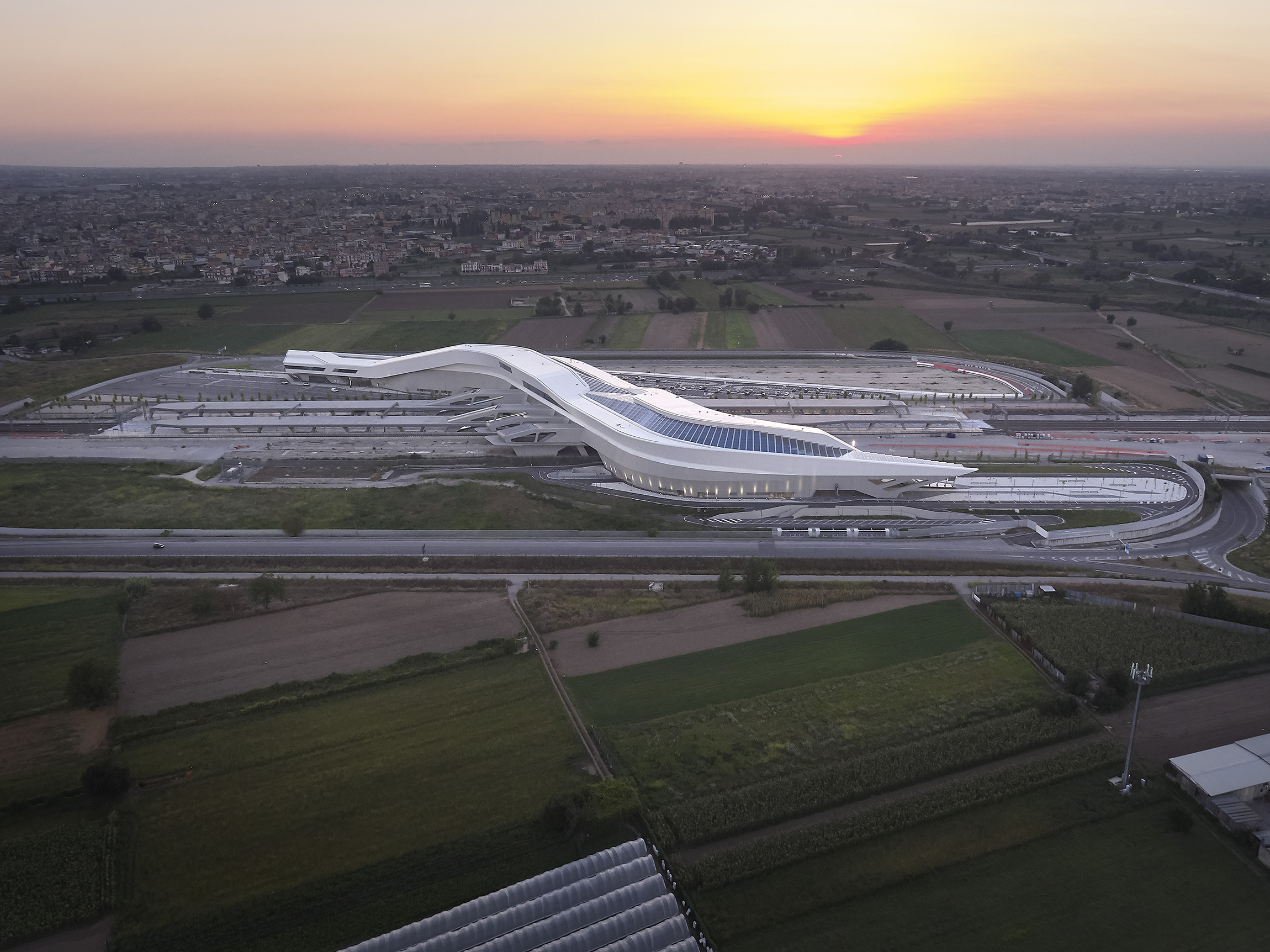
The Napoli Afragola railway station, the Zaha Hadid Architects-designed transportation gateway to the south of Italy located 12km north of Naples, has been photographed on its first birthday. The station opened in June 2017 and was originally commissioned as a response to the increase in demand for train travel in Italy – that has increased by 50 per cent over the last decade.
The sweeping design was structured by the main concourse that forms an urbanised public bridge, connecting communities either side of the eight railway tracks. The architecture was defined by ZHA through examining the proposed circulation routes of the passengers and how they would traverse this walkway to reach the platforms. Yet this bridge became an elevated building that houses all the station's facilities for departing, arriving and connecting passengers – bringing people in from the large entrances at each end of the station, and flowing them through the multi-levelled bridge layered with public zones, shops and amenities.
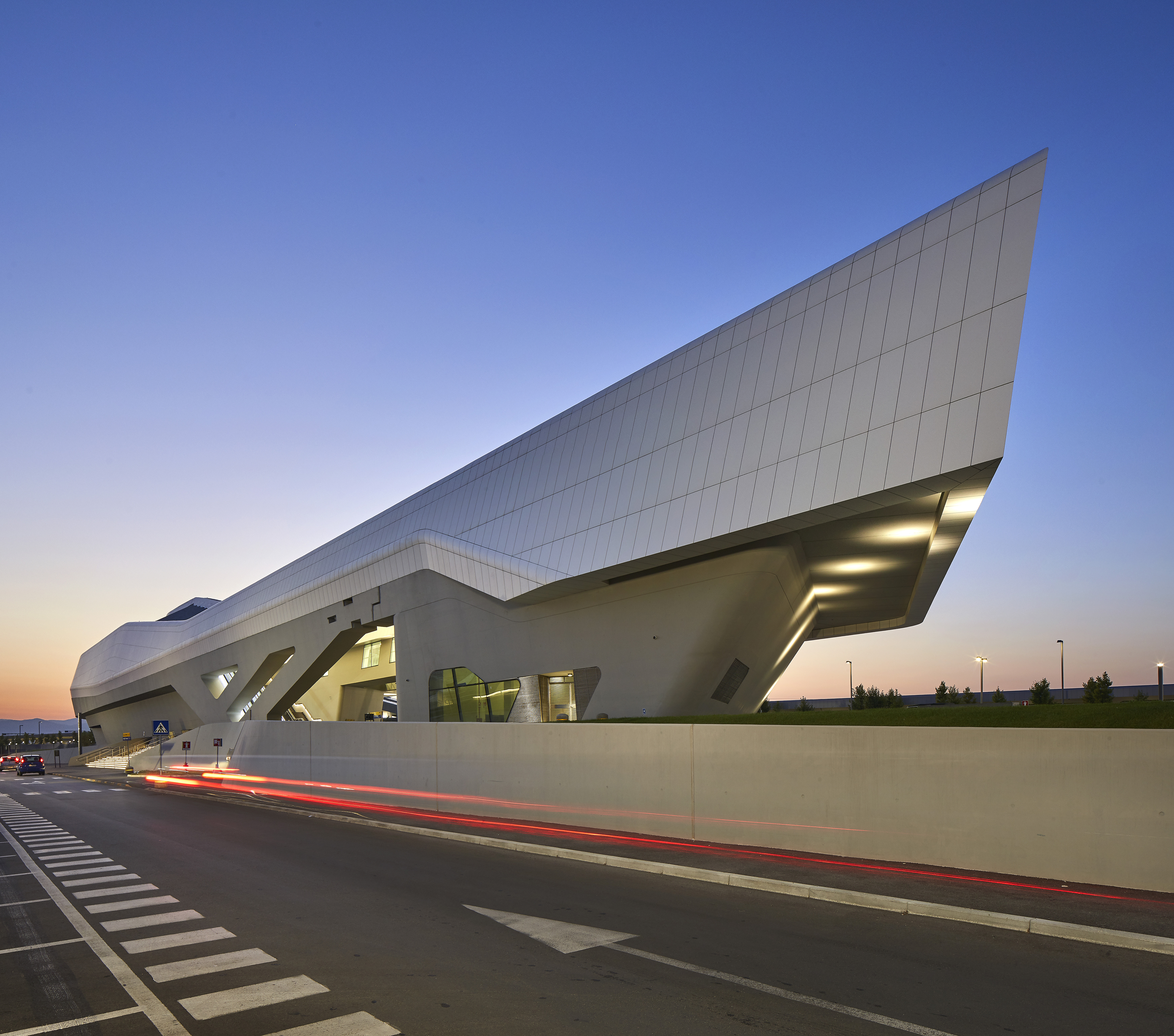
The exterior of the Napoli Afragola train station.
A reinforced concrete base supports the elevated concourse of steel ribs clad in Corian® and topped off with a glazed roof. The curved structural concrete elements were built using technologies initially developed for the construction of the ZHA-designed MAXXI Museum in Rome. The wooden formwork was replaced by prefabricated steel units, and the double curves that define the sweeping form of the station's roof were realised with CNC milled polystyrene formwork.
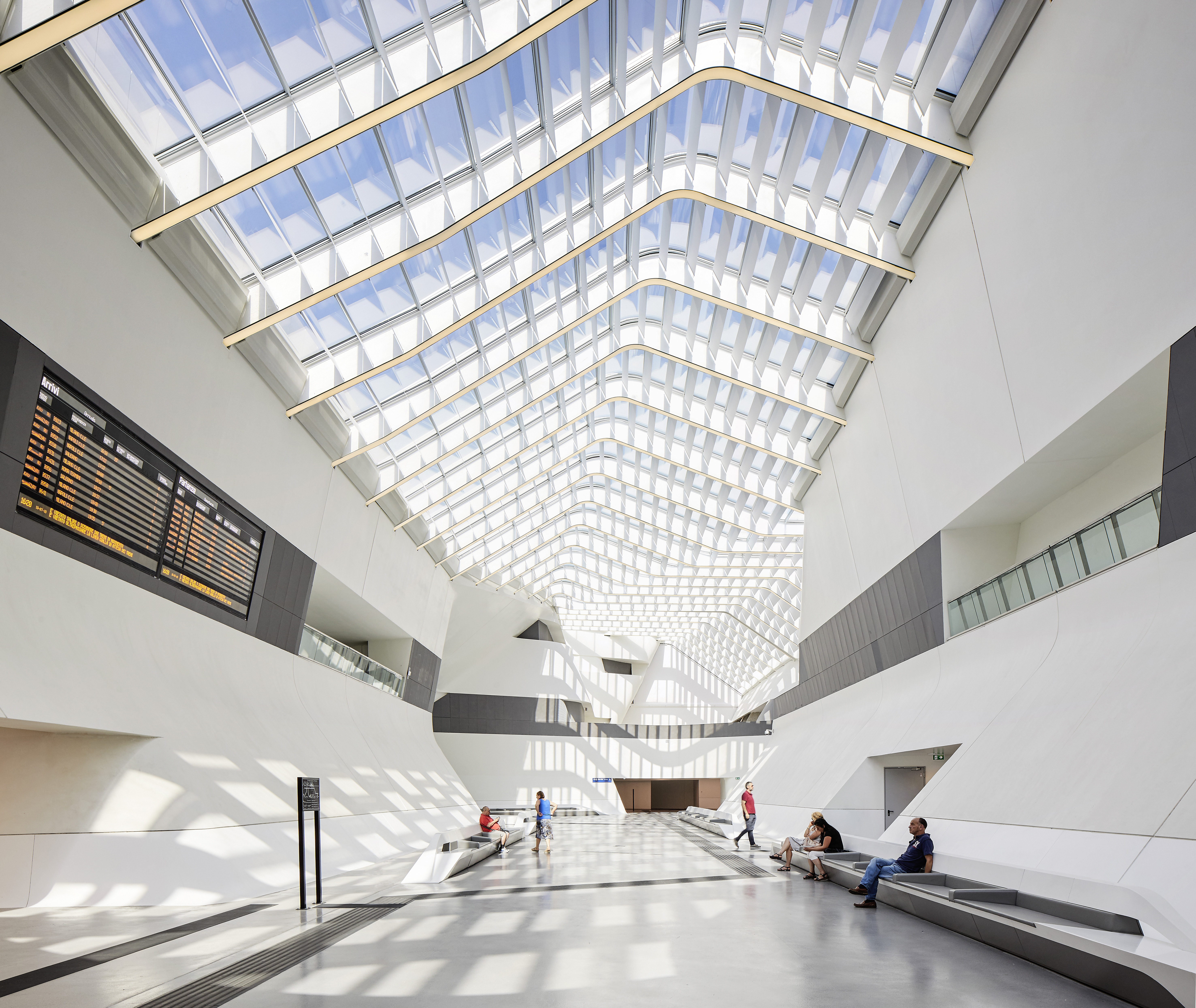
The exterior of the Napoli Afragola train station.
The station is an important part of the Italian train infrastructure – it serves four high speed inter-city lines, three inter-regional lines as well as a local commuter line. It is pivotal to the 15 million residents of Campania, Puglia, Molise, Calabria and Sicily in southern Italy, and is also a national connection to the north of Italy and the rest of Europe.
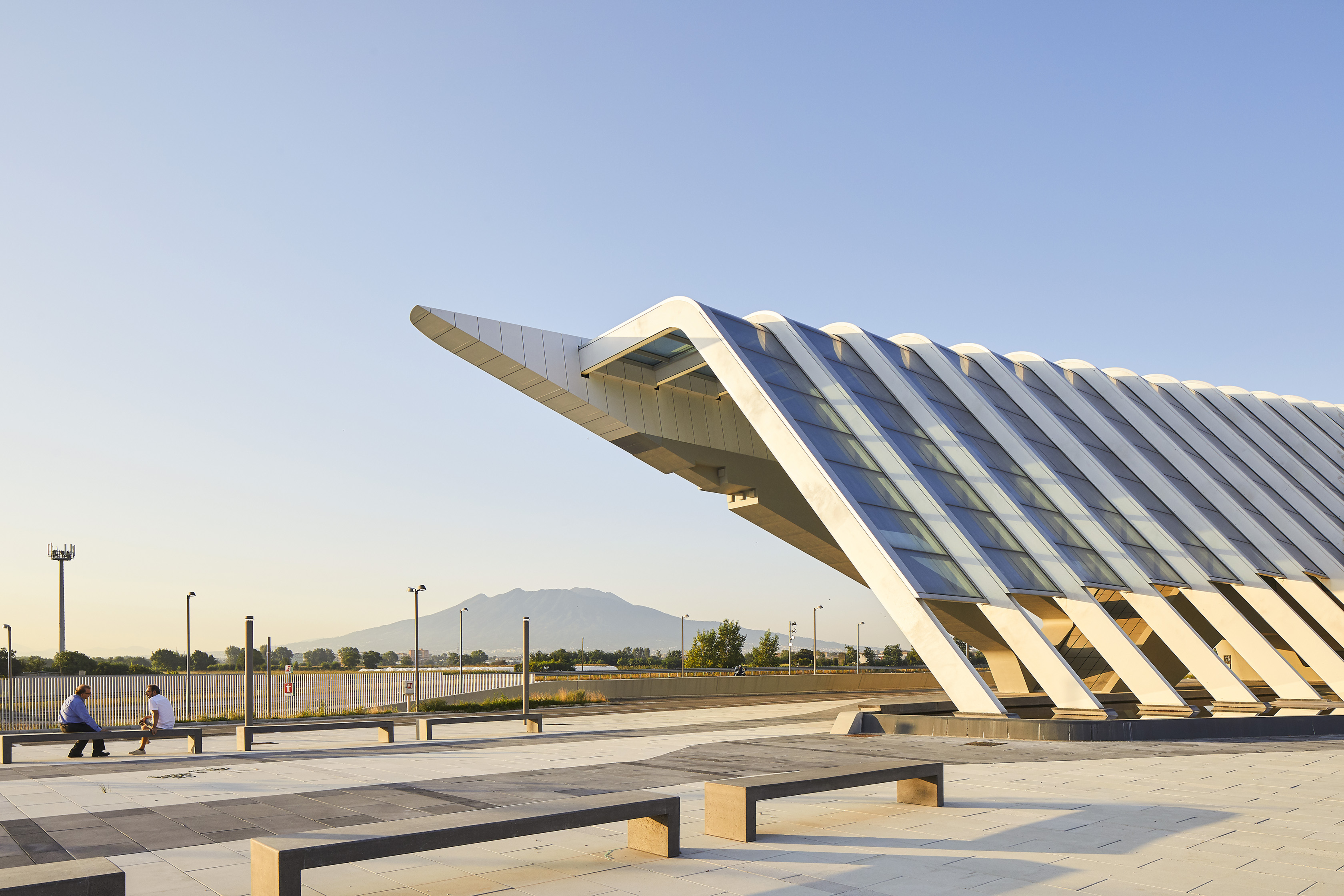
Public space outside the Napoli Afragola train station.
The future holds more for the rail station. High speed rail services will eventually connect with Bari and Reggio Calabria with the north of Italy and Europe. By 2022 the new rail infrastructure will serve the entire Campania region, integrating with the Napoli Cancello line and the Circumvesuviana commuter railway extension further to the south. Watch this space.
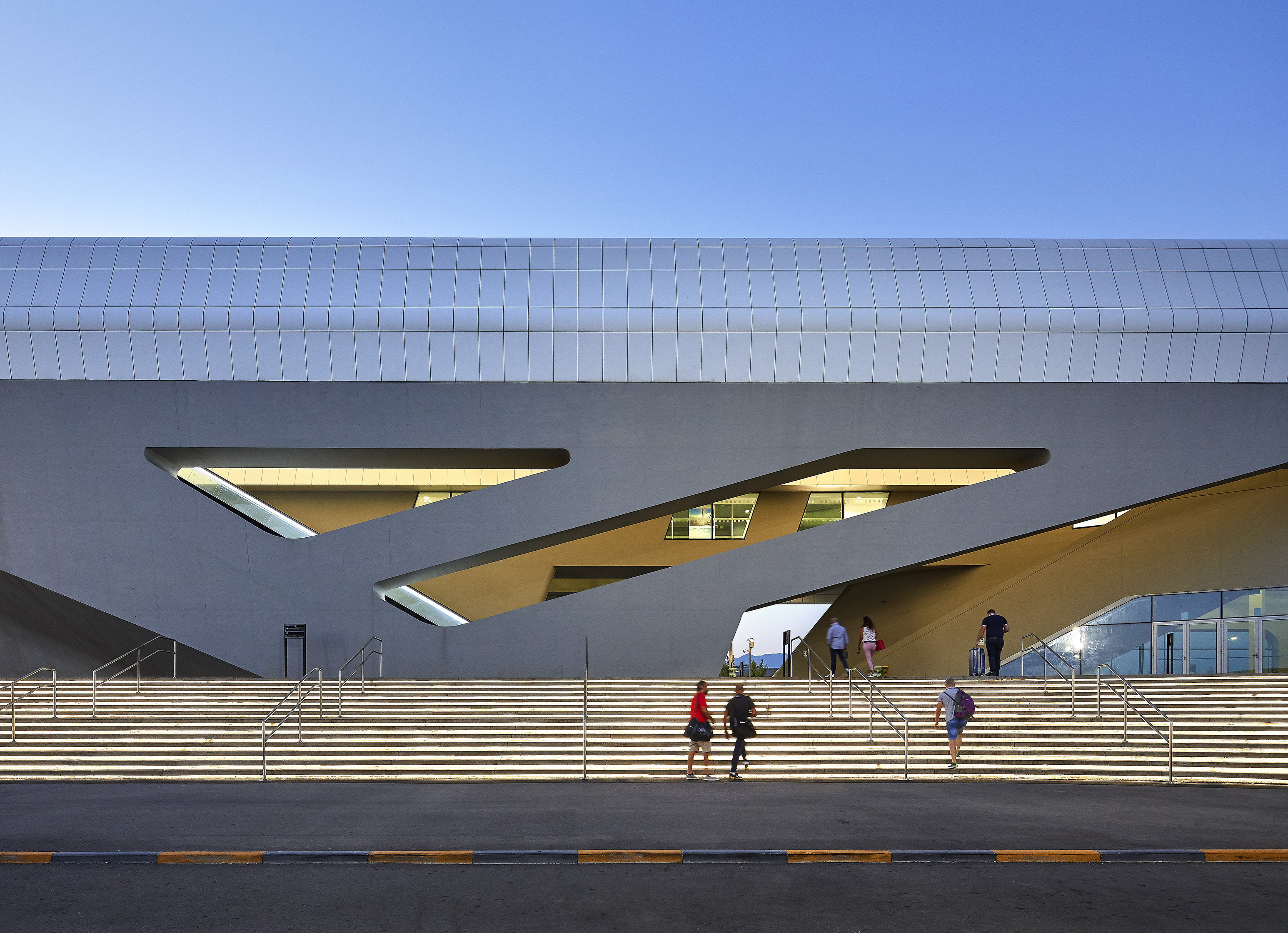
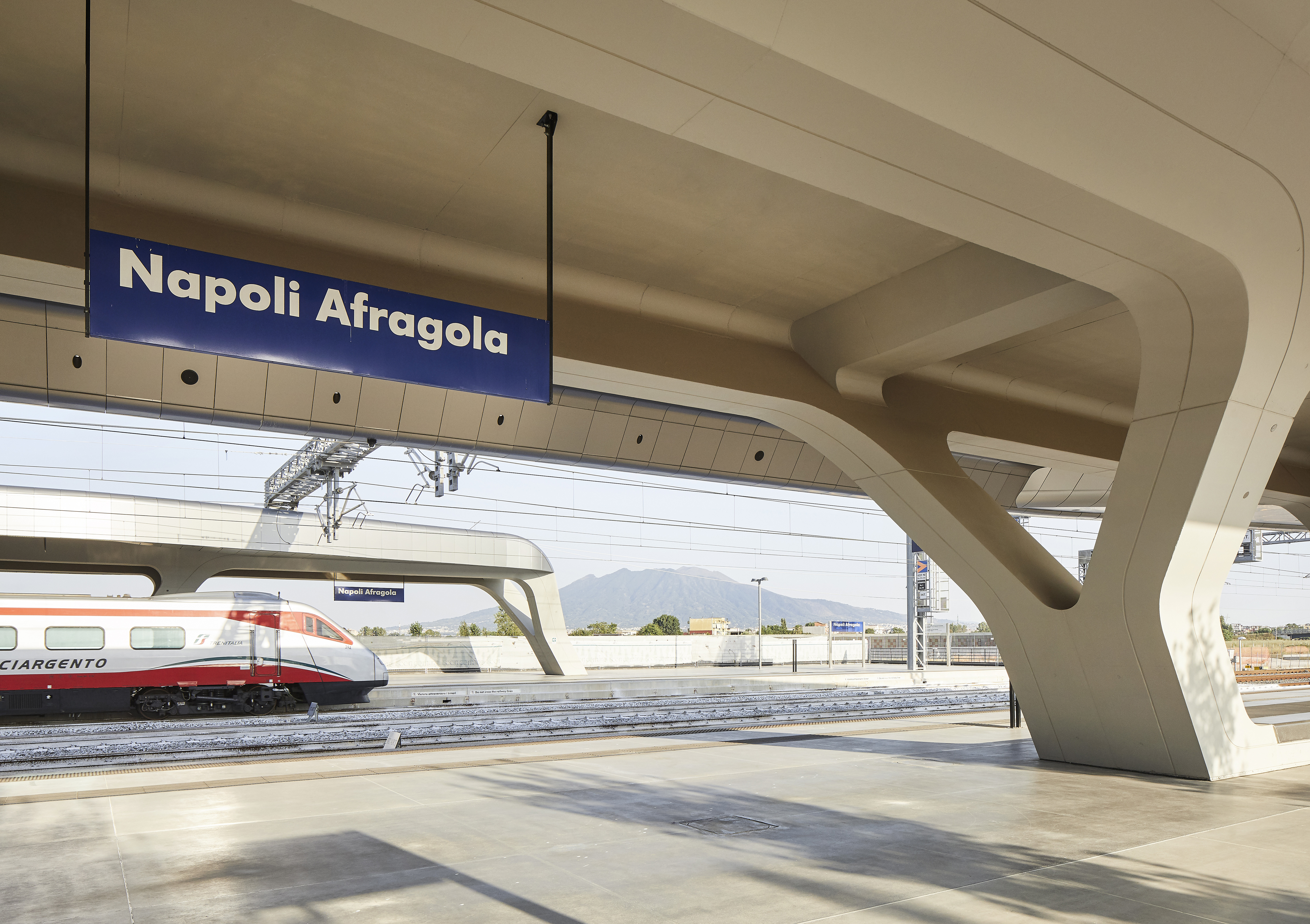
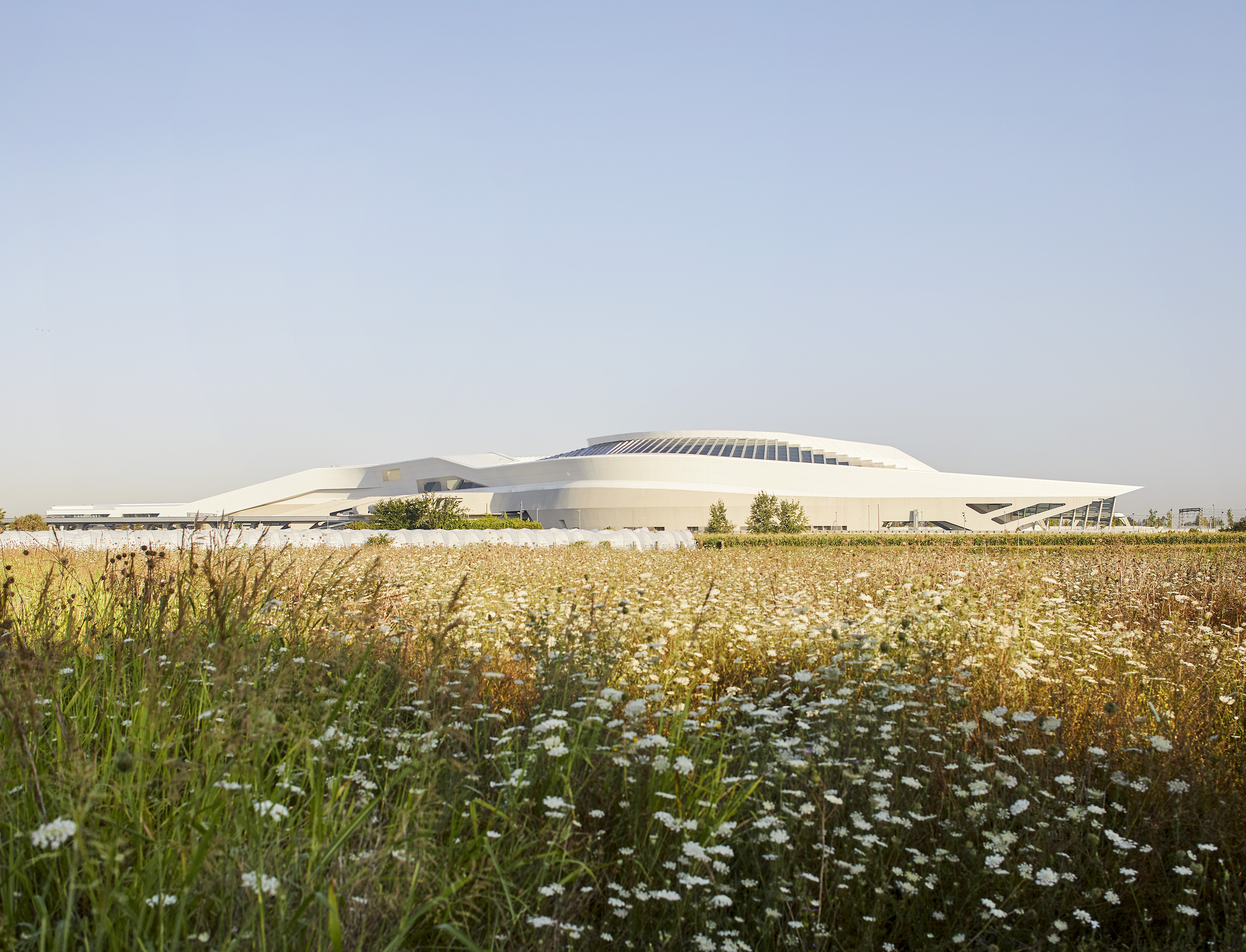
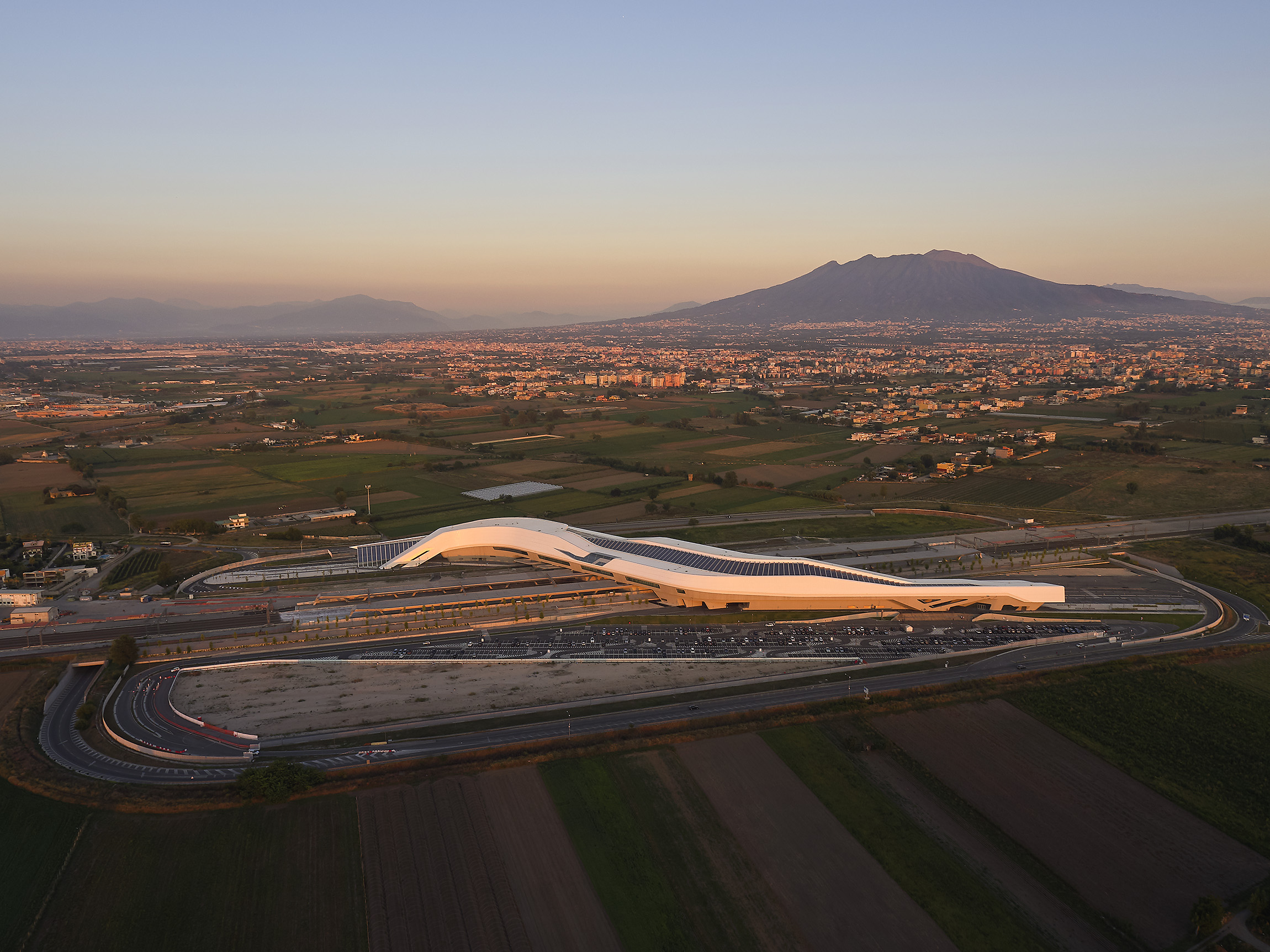
INFORMATION
For more information, visit the Zaha Hadid Architects website
Wallpaper* Newsletter
Receive our daily digest of inspiration, escapism and design stories from around the world direct to your inbox.
Harriet Thorpe is a writer, journalist and editor covering architecture, design and culture, with particular interest in sustainability, 20th-century architecture and community. After studying History of Art at the School of Oriental and African Studies (SOAS) and Journalism at City University in London, she developed her interest in architecture working at Wallpaper* magazine and today contributes to Wallpaper*, The World of Interiors and Icon magazine, amongst other titles. She is author of The Sustainable City (2022, Hoxton Mini Press), a book about sustainable architecture in London, and the Modern Cambridge Map (2023, Blue Crow Media), a map of 20th-century architecture in Cambridge, the city where she grew up.
-
 Extreme Cashmere reimagines retail with its new Amsterdam store: ‘You want to take your shoes off and stay’
Extreme Cashmere reimagines retail with its new Amsterdam store: ‘You want to take your shoes off and stay’Wallpaper* takes a tour of Extreme Cashmere’s new Amsterdam store, a space which reflects the label’s famed hospitality and unconventional approach to knitwear
By Jack Moss
-
 Titanium watches are strong, light and enduring: here are some of the best
Titanium watches are strong, light and enduring: here are some of the bestBrands including Bremont, Christopher Ward and Grand Seiko are exploring the possibilities of titanium watches
By Chris Hall
-
 Warp Records announces its first event in over a decade at the Barbican
Warp Records announces its first event in over a decade at the Barbican‘A Warp Happening,' landing 14 June, is guaranteed to be an epic day out
By Tianna Williams
-
 Cantiere delle Marche is an Italian shipyard with a speciality: the high-end explorer yacht
Cantiere delle Marche is an Italian shipyard with a speciality: the high-end explorer yachtWe talk to Vasco Buonpensiere, CEO of Cantiere Delle Marche, about the rise of ultra-self-sufficient, multi-purpose, long distance explorer yachts
By Josh Sims
-
 Lamborghini, fast friends with the Italian State Police for two decades
Lamborghini, fast friends with the Italian State Police for two decadesWhen the Italian police need to be somewhere fast, they turn to a long-running partnership with one of the country’s most famed sports car manufacturers, Lamborghini
By Shawn Adams
-
 We are the world: Pininfarina’s ‘Orbis’ taps Papal support for an eco-friendly agenda
We are the world: Pininfarina’s ‘Orbis’ taps Papal support for an eco-friendly agendaThe Orbis is a ‘symbolic object’, a gift to Pope Francis from the Italian design agency at a time of political upheaval and social fracture around all aspects of sustainability
By Jonathan Bell
-
 24 transportation design innovations for 2024
24 transportation design innovations for 2024From electric cars to new airports and sports boats, here’s a non-exhaustive list of 24 of the most interesting transportation design innovations to expect in the coming year
By Jonathan Bell
-
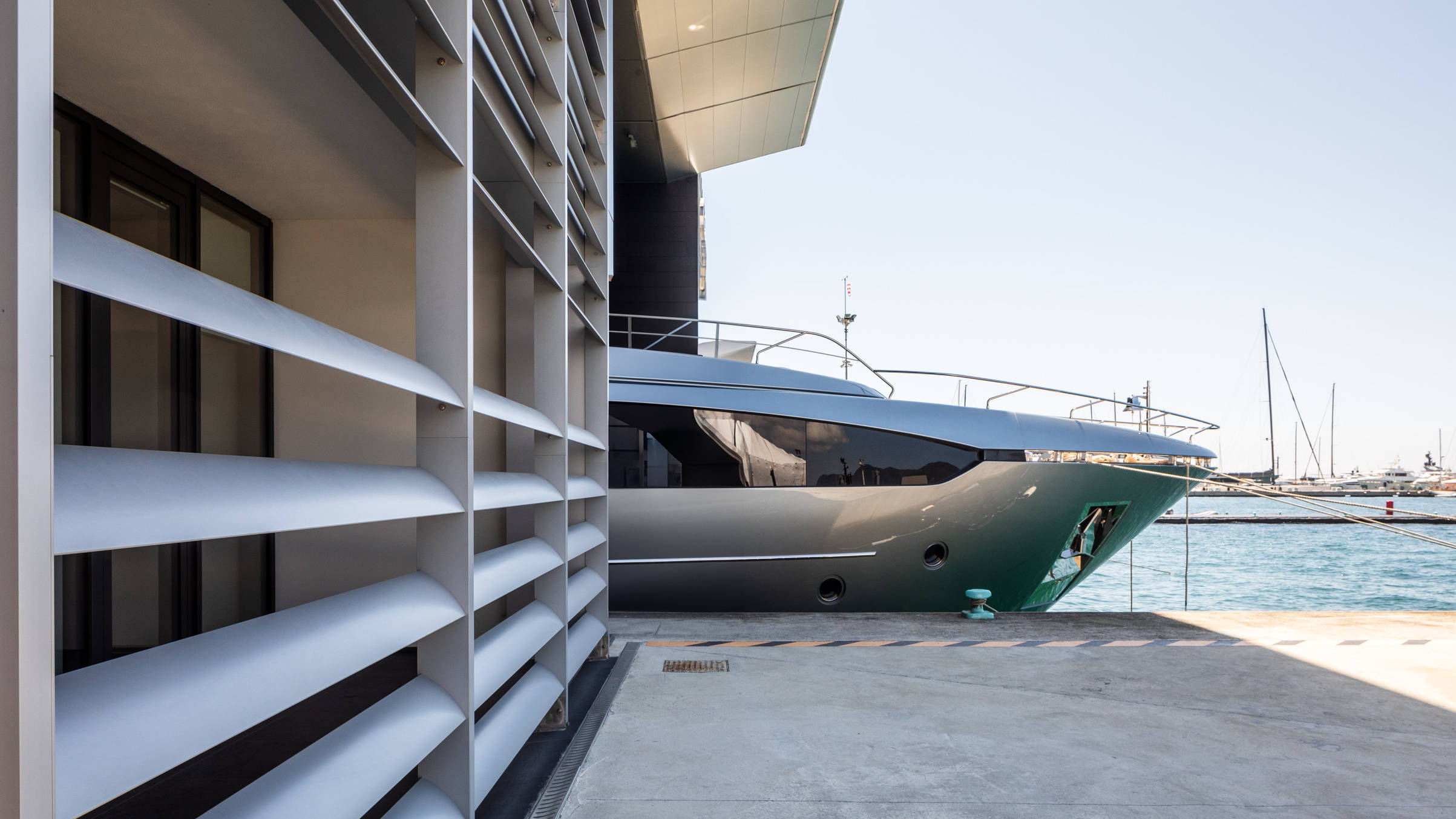 Riva Yacht’s Italian shipyard and HQ is refined and expanded courtesy of MMAA
Riva Yacht’s Italian shipyard and HQ is refined and expanded courtesy of MMAAThe home of Riva Yacht’s superyacht division on the shores of the Ligurian Sea has been transformed by Studio Manfroni e Associati di La Spezia
By Jonathan Bell
-
 The Zagato Twins revive a classic niche Aston Martin design
The Zagato Twins revive a classic niche Aston Martin designJust 19 examples of the Aston Martin Vantage V12 Zagato Heritage Twins by R-Reforged continuation will be made, and you’ll only be able to buy them as a pair
By Jonathan Bell
-
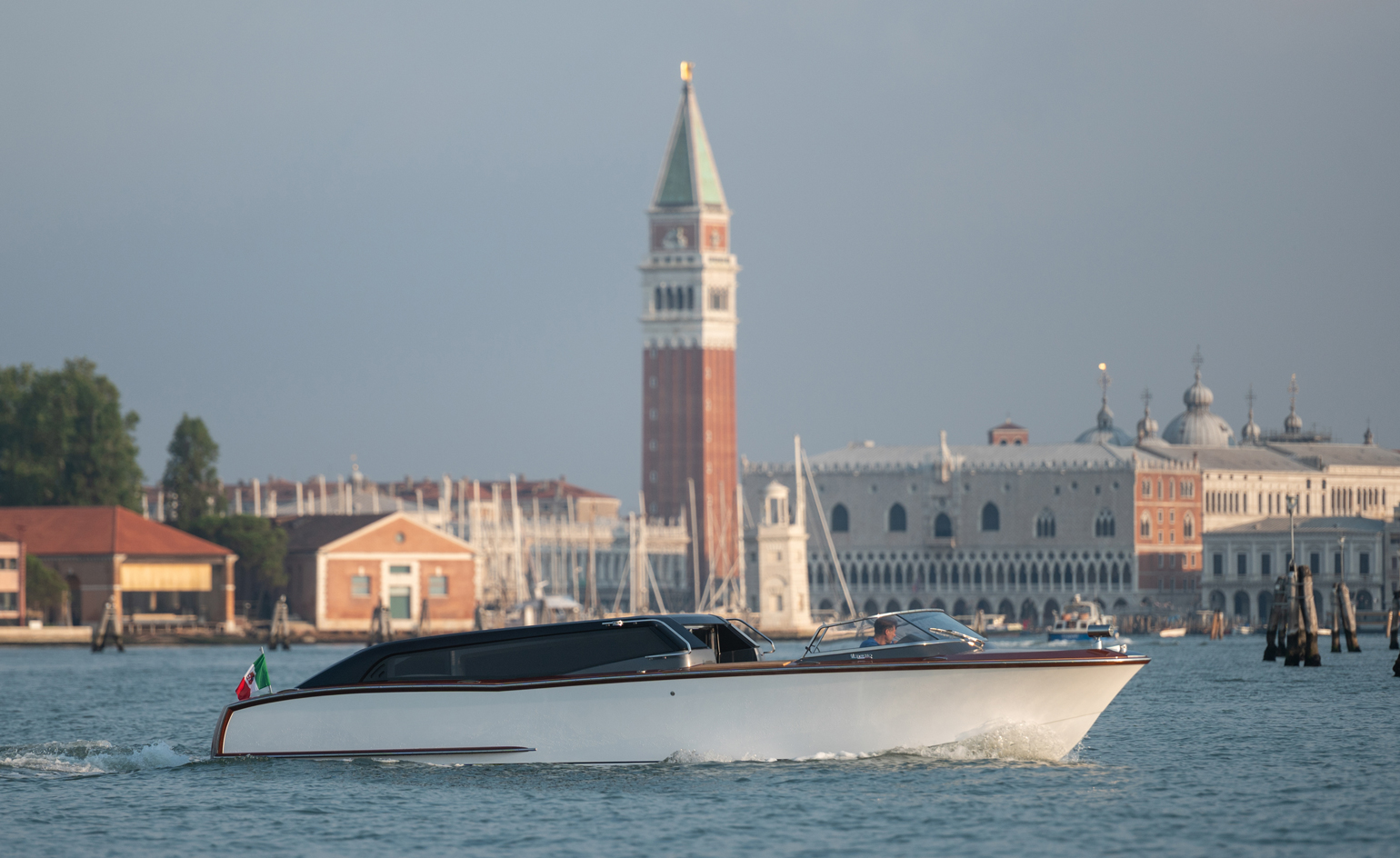 Venetian designers build silent, emission free water taxi
Venetian designers build silent, emission free water taxiMaking use of the sudden and unexpected stillness of lockdown, superyacht design studio Nuvolari Lenard explore ways of enhancing the experience of Venice water ways
By Jonathan Bell
-
 Designers are creating architectural garages for supercars
Designers are creating architectural garages for supercarsSupercar builders Mercedes, Aston Martin and new venture Superfuturedesign are branching into architectural design to create the garage of the future
By Jonathan Bell